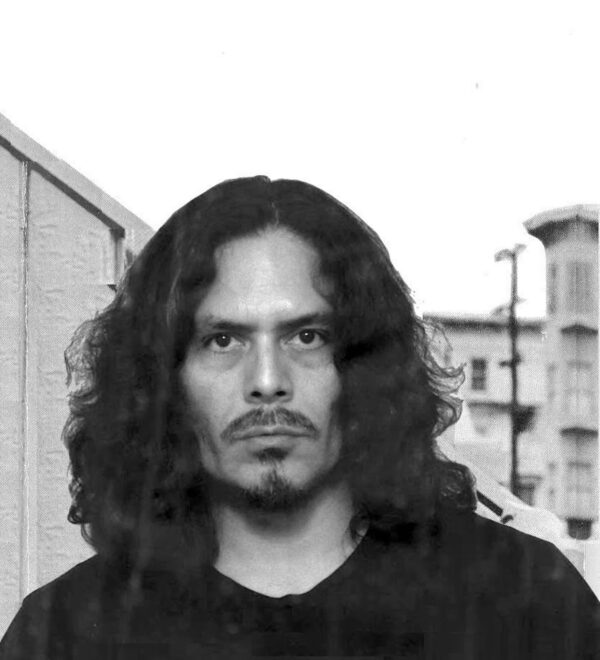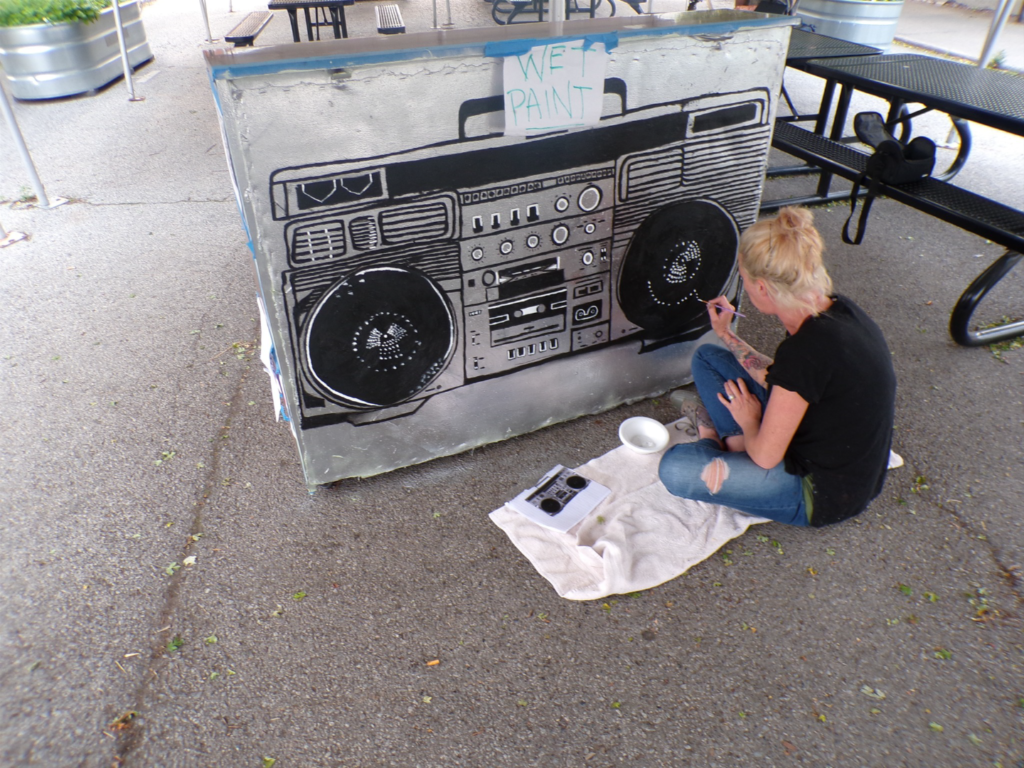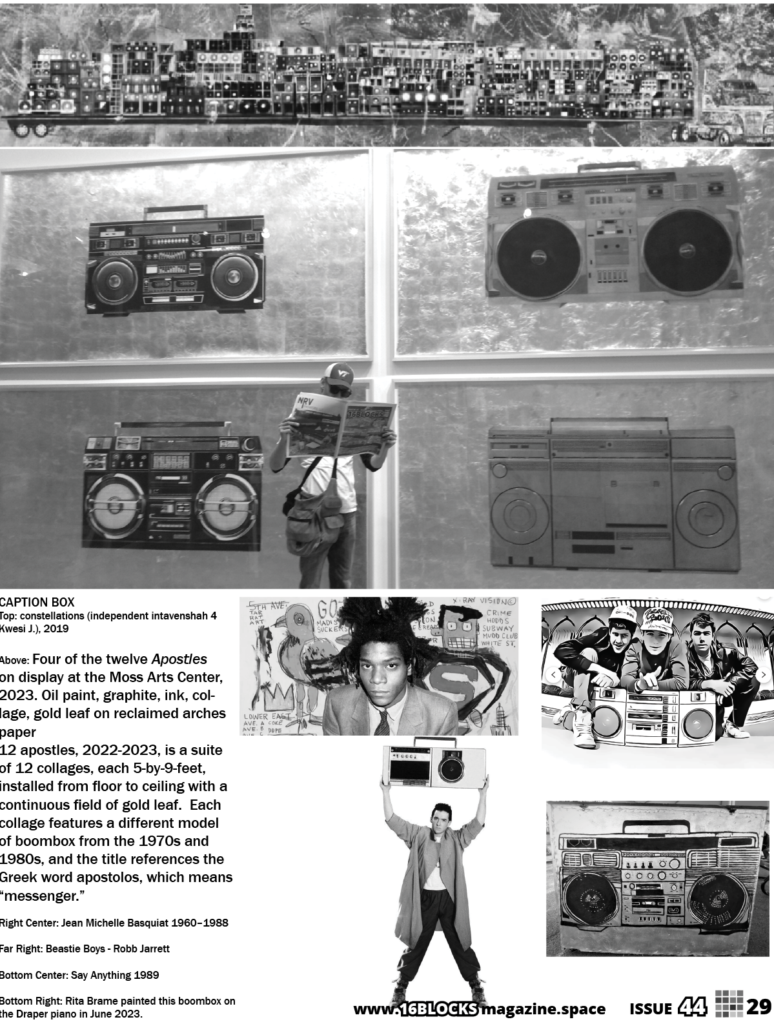Highlights from Rita Brame’s conversation with the artist william cordova who has recently been elevating what once was called a ghetto blaster into a vessel for Transcendent Transceiving.


Cordova spoke with Creative Director Rita Brame from Miami where he is organizing The AIM Biennial for the internationally renowned Miami Art Week. AIM is a conceptual program promoting outdoor ephemeral, virtual, and physical art projects.
It was a boombox that was our first mural, our first piece of public art with the relaunch on the draper piano, and was recently celebrated in a large scale at the Moss Arts Center with william s. Cordova’s 12 Apostles featured in his can’t stop, won’t stop: tenets of southern alchemy exhibition that closes out the Moss Arts Center 2023 season.

Highlights from the Interview
They’re titled the Twelve Apostles but there isn’t any reference or relationship to any biblical narrative.
It was more of a syncretic approach to material culture.
Symbols of popular culture okay but digging in back to its roots because boom boxes didn’t are not synonymous necessarily with rap music or hip-hop. They existed before. Probably during the infancy stage of hip-hop music in the early 70s and at the same time I was interested in addressing in
Contemporary Art the same way that artists like Jean Michelle Basquiat who incorporated pop culture, characters or imagery like the Human Torch from the Fantastic Four into his art.
And so these are examples of the boomboxes in the syncretic approach
to Western pop culture images or tools, that also have this duality, this otherness.
Once they were integrated and became part of the early rap or hip-hop scene in the late 70s, early 80s, and at the time just to contextualize, they were dismissed as ghetto blasters, mainstream media would describe them as that, as well as dismissing rap music or hip-hop music well into the late 80s. Until John Cusack, iconically took the boombox and put it above his head in the film Say Anything.
So that was the turning point and then became a more accepted symbol. The Beastie Boys were using boomboxes to take pictures with and stuff like that in their music videos, but that wasn’t mainstream yet.
But it was Say Anything that really made the boombox more mainstream.
I was interested in addressing the boombox outside of that mainstream prior to that because that’s the generation that I grew up in, and so it has different functions, different representations and meanings to different communities and different racial groups, especially in the US, but the boombox outside of the US has always been very consistent. It is as a transceiver It is the way to communicate. It’s a portable vessel that is extremely versatile and important.
I’m not sure how familiar with radio outside of the US but the radios, especially during the Cold War, were extremely important because most people didn’t have TVs outside of the US in the 50s and 60s until the Japanese started making really inexpensive TVs in mid-50s
A lot of urban guerilla groups in South America and the Caribbean used radio. They would Co-op radio stations to transmit political agendas and so transistor radios boomboxes were often used to listen to and access communities.
It’s not that much of a difference in the US except that the political agendas were more integrated and abstracted. They were more poetic, especially in rap music, you could get a whiff of that from late 60s acts like The Last Poets, The Ghetto Poets, from their compositions, or Gil Scot-Heron on some of the early rap music.

This was originally published as a two page spread in Free Print Issue #44 (Dec 2023).

